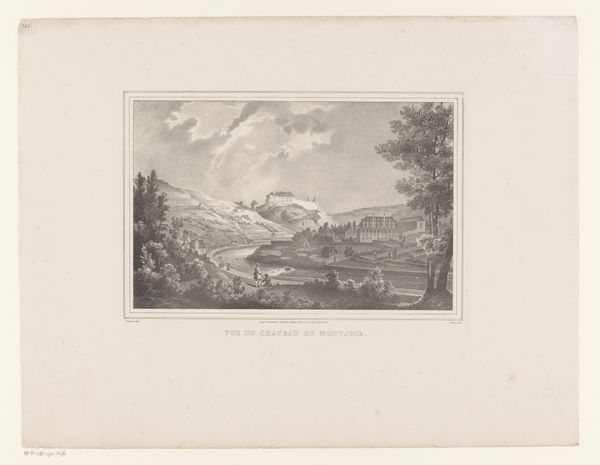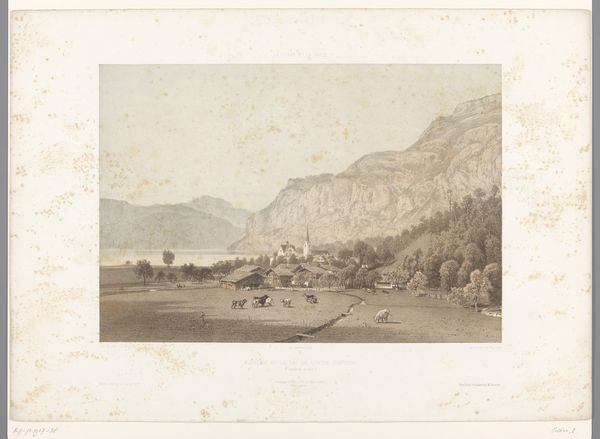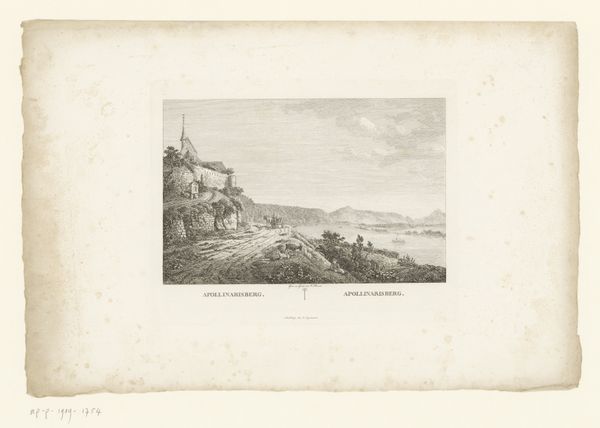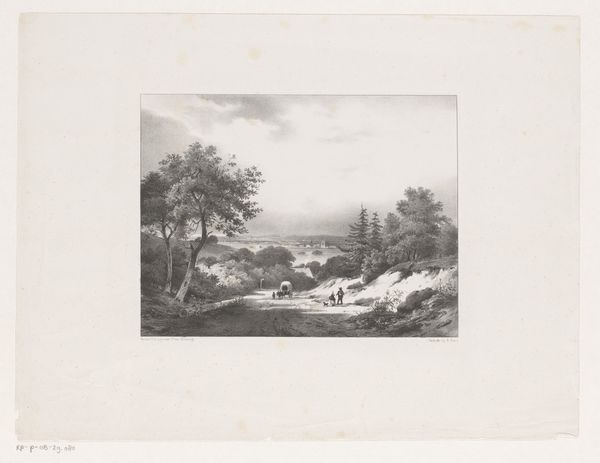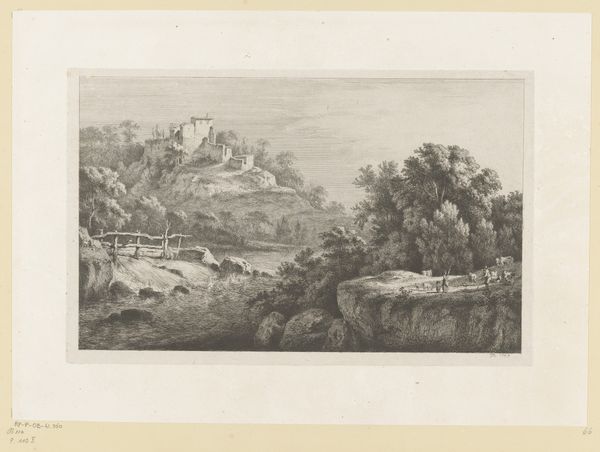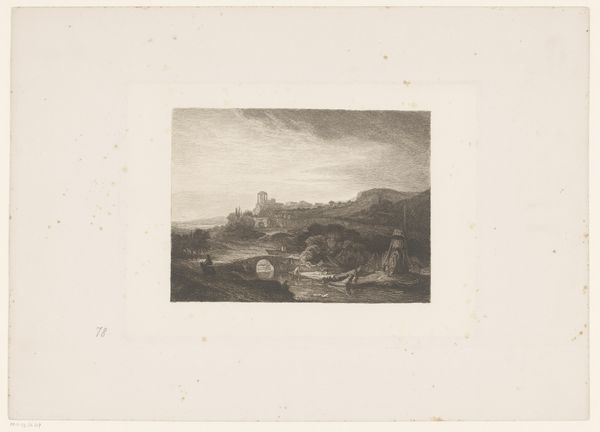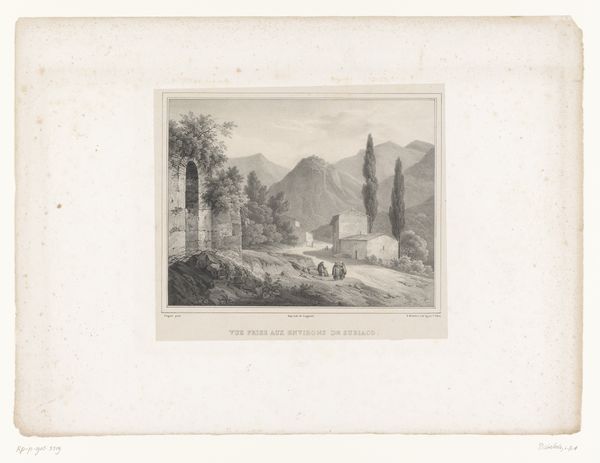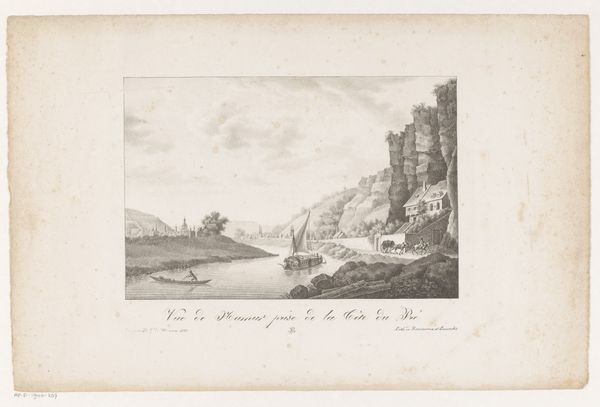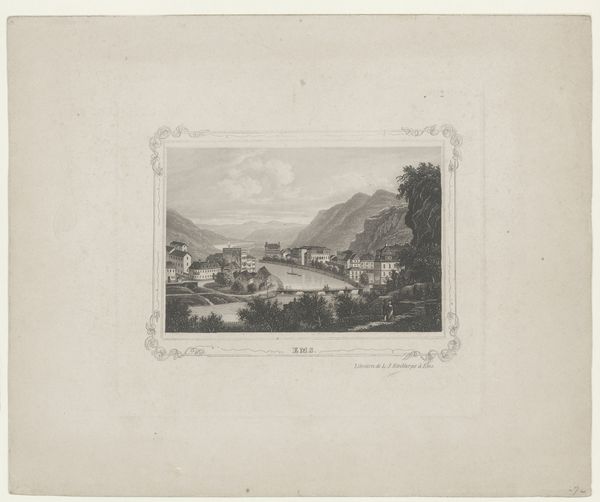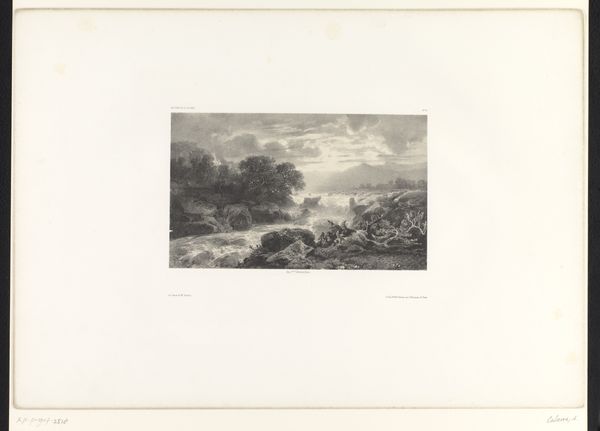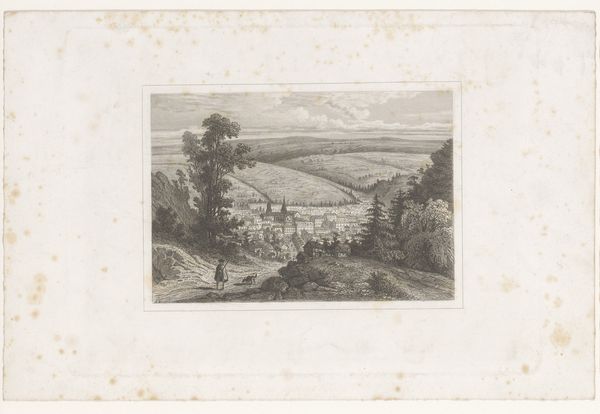
print, engraving
# print
#
landscape
#
engraving
#
realism
Dimensions: height 292 mm, width 430 mm
Copyright: Rijks Museum: Open Domain
Arie Ketting de Koningh made this landscape drawing on paper, sometime in the mid-19th century. Look closely, and you'll see it was made by finely layering graphite, or possibly charcoal. This allows the artist to build up a rich tonal range, from pale greys to almost solid black. But it also requires a good deal of labor, patiently hatching and cross-hatching the marks to model the forms. The subject, too, speaks of labor. Cattle were crucial to the Dutch economy, and they are shown here at rest, as if gathering strength to produce more milk. Even the ruin in the background reminds us of earlier generations of workers, who built it stone by stone. Ultimately, this seemingly straightforward drawing rewards close attention to the artist's process, and to the social context of its making. We begin to appreciate how materials, making, and context are vital for understanding the full meaning of an artwork.
Comments
No comments
Be the first to comment and join the conversation on the ultimate creative platform.
